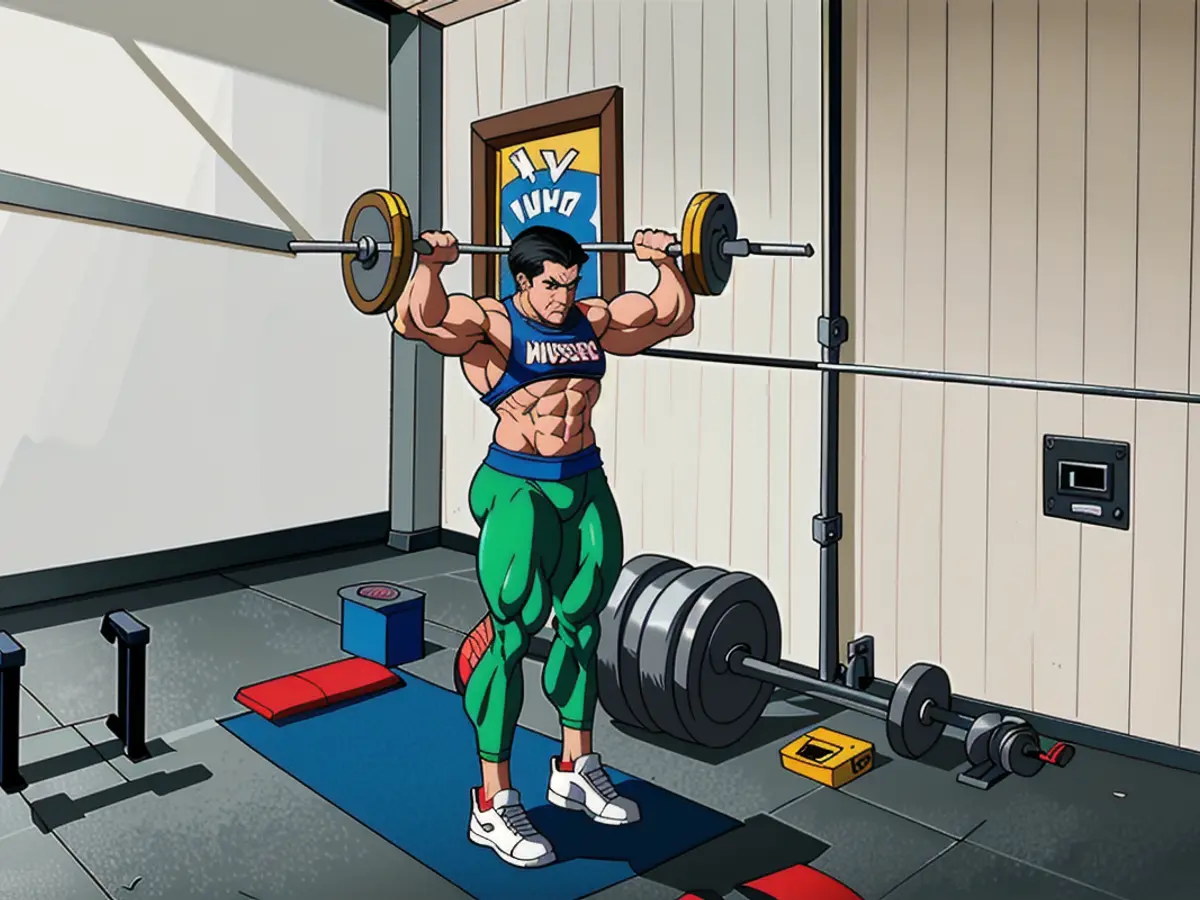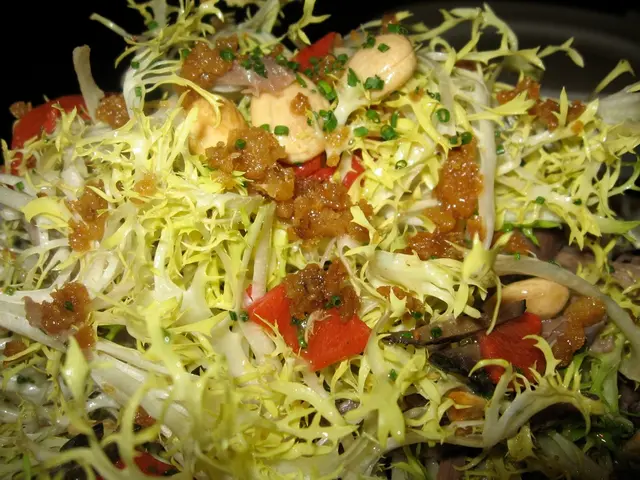Does Building Muscle and Trimming Fat Increase Your Muscular Physique?
Want to get those muscles poppin'? Discover how to kickstart your bulking or cutting phase for optimal results. Here's the down-low on these popular fitness methods.
What's Bulking All About?
Bulking is the process of gaining weight for muscle enhancement. It involves:
- Creating a strategic calorie surplus. This means eating more calories than you burn, to promote weight gain for boosted muscle mass.
- Engaging in high-intensity resistance training, which helps build muscle and strength.
Some might call this "clean bulk" (nutrient-dense foods) or "dirty bulk" (tolerating an occasional treat for a quick calorie boost).
Bodybuilding legends like The Rock and Arnold Schwarzenegger probably bulked up quite a bit, naturally.
Then There's Cutting
Cutting is designed to help you lose fat and minimize muscle loss. This process typically involves:
- A calorie deficit, meaning you eat fewer calories, promoting fat loss while keeping muscle mass.
- Continuing resistance training to maintain muscle mass, but less intense workouts.
Bodybuilders or athletes often perform a cutting phase after bulking to eliminate excess weight and fat, or before competitions.
Launching Your Bulking Journey
Bulking might last from 1 month to over half a year, depending on your fitness goals. Here are some tips to get started:
- Determine your maintenance calories, using online calculators. Consulting with a registered dietician and personal trainer can further personalize your plan.
- Add a 10-20% calorie surplus. For example, a 175-pound individual would increase daily intake by 250-500 calories. A 135-pound person would increase intake by 200-400 calories.
- Uplevel your protein consumption, aiming for 0.7-1g per pound of body weight to aid muscle growth.
- Weigh yourself regularly to keep track of weight gain, aiming for a weekly increase of 0.25-0.5%.
- Practice high-intensity resistance training.
- Reassess and adjust by gradually upping your calorie intake by 100-200 calories per day if necessary.
A Peek at a Bulking Diet Plan
During bulking, focus on high-protein foods like eggs, beef, chicken, fish, tofu, cottage cheese, and low-fat cheese. Don't forget healthy fats like olive oil, avocado, nuts, and fatty fish.
Legumes, complex carbs like sweet potatoes, brown rice, oats, and quinoa, along with fruit and veggies will round out your meals. Try to limit high-processed foods and saturated fats.
Time to Cut
Cutting phases generally last for 2-4 months. Here's what you need to know to get started:
- Determine your maintenance calories.
- Consume 500 fewer calories daily.
- Keep your protein levels high to maintain energy.
- Engage in resistance training.
- Experiment to find the best approach for your body.
The Deal: A Cutting Diet
During cutting, focus on high-nutrient, low-cal foods to support fat loss while maintaining muscle. While limiting calories and fat, adding carbs, and indulging occasionally is still on the menu.
Legumes, leaner protein sources, complex carbs, lower-sugar fruits, and veggies are what to eat. Foods to limit include high-calorie foods, high-fat proteins, sugary drinks, processed foods, and high-fat foods.
Bulking vs. Cutting: The Pros & Cons
Both bulking and cutting can help achieve fitness goals with a regular exercise routine. But they do have some potential drawbacks.
Bulking Advantages
- Increases muscle gains
- Boosts strength
- Improves bone density
- Aids in exercise recovery
Bulking Disadvantages
- Can result in weight gain
- Affects blood values
- May make you feel sluggish
- Can affect insulin sensitivity
- Can decrease agility
Cutting Advantages
- Promotes fat loss
- Enhances muscle appearance
- Improves blood values
- Increases insulin sensitivity
- Boosts athletic performance
Cutting Disadvantages
- Can cause slight muscle loss
- Can decrease certain sex hormones
- May cause hunger or irritability
- Can decrease bone density
- Can affect sleep quality
- May lead to disordered eating
Bulking & Cutting FAQs
Can You Bulk & Cut at the Same Time?
Technically, it's possible to achieve body recomposition by losing weight and gaining muscle simultaneously, but it typically requires being a newbie to training, having an above-average percentage of body fat, or using anabolic steroids.
Should You Bulk or Cut First?
It's generally better to bulk first if your goal is to build muscle after that. Bulking first and then cutting allows you to increase muscle mass and cut down excess gained weight.
How Long Should a Bulking and Cutting Phase Last?
The duration for bulking and cutting phases varies depending on your goals and body composition. Most people bulk from 1 month to over 6 months, while cutting usually lasts 2-4 months.
Tips for Achieving Optimal Results
Customize your bulking and cutting plan for best results. Monitor your progress and be prepared to make adjustments when needed. Consider working with a personal trainer and registered dietitian.
Cycle between bulking and cutting phases. Track your diet and progress religiously. And remember — be patient. Consistent effort and a tailored plan will help you reach your fitness goals.
- To boost muscle mass, engage in a strategic calorie surplus during bulking, consisting of nutrient-dense foods for a clean bulk or occasional treats for a dirty bulk, while incorporating high-intensity resistance training.
- Depending on individual preferences and fitness goals, the duration of a bulking phase can range from 1 month to over half a year.
- Tracking calorie intake, protein consumption, and weighing oneself regularly can help refine and optimize a bulking diet plan.



